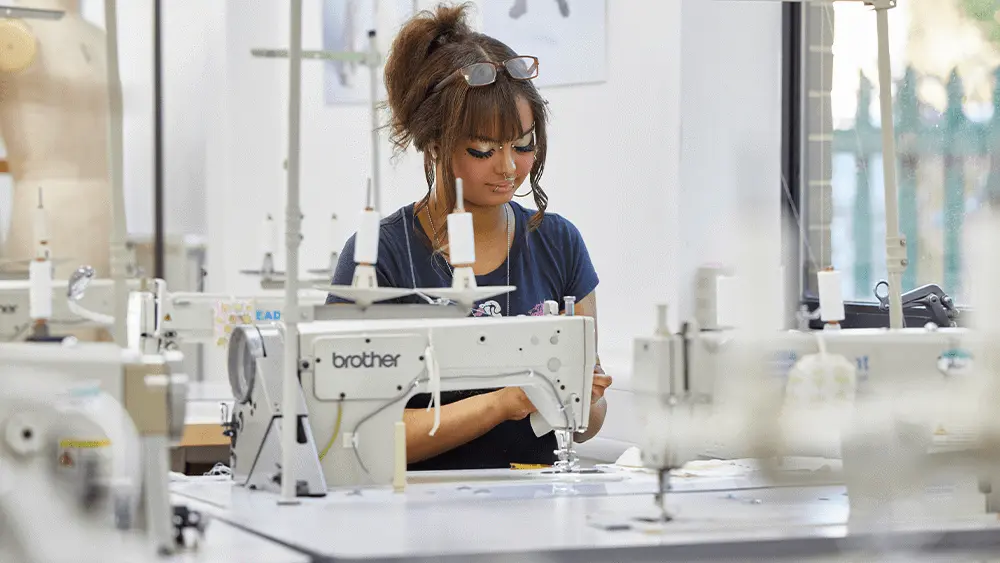
How Christmas ads aren't just selling products, they're telling stories
Dean of the School of Business, Law and Society, Professor Lois Farquharson dives into the power of storytelling in retail adverts.
20 November 2025
14 October 2025
The European Union has formally adopted an amendment to its Waste Framework Directive, known as Extended Producer Responsibility. Here, Southampton Solent University’s Lecturer in Contextual Studies for Fashion, Dr Marianne Damoiseau asks: what does this mean for the fashion industry?
It's no secret: the fashion industry is responsible for vast amounts of waste globally. In 2015 more than sixteen million tons of textile waste was generated in the USA (Shirvanimoghaddam, et al., 2020); it has been estimated that “an average Australian purchases 27 kg of new textiles each year of which 23 kg is discarded into landfill” (Shirvanimoghaddam, et al., 2020); and the EU has found that its population discards around 12kg per person each year – around 5 million tonnes.
These numbers have grown exponentially in recent years, due mostly to the rise in popularity of fast fashion, which, in the European Commission’s words, “is characterised by more frequent fashion collections being placed on the market with low-priced products that do not internalise environmental externalities, encourage customers to shop impulsively and incentivises purchasing larger quantities of clothes” (2023). These impulsive purchases of cheap clothing have led to consumers purchasing garments and discarding them without ever having worn them. This problem is compounded by the fact that between 10% and 40% of garments produced are not sold and end up in landfills or being destroyed (Tonti, 2024). The amendment of the Waste Framework Directive is an attempt to curb this staggering amount of waste.
The EU aims to make such disposal of textiles a last resort and is trying to encourage textile producers to prevent waste. And if this fails? To reuse, recycle, and recover their products. A crucial part of the Waste Framework Directive amendment is the introduction of Extended Producer Responsibility, which makes companies financially responsible for collecting, sorting, reusing, and recycling the textiles they have produced. This would be done through the payment of a fee, or eco-contribution, based on the amount of textiles produced and on their ease of recycling (garments with mixed fibres or with zips or buttons costing more) (European Commission, 2025).
It's important to note that EPR is not a new concept - France and the Netherlands already have EPR schemes in place – but it is a great way to ensure that producers play a part in reducing waste rather than putting the onus for recycling and reusing clothes solely on consumers. It is hoped that the financial cost of dealing with waste will encourage producers to manufacture textiles in a more sustainable way; for example, designing clothes that are easier to repair or recycle or using more recycled materials when making new garments.
While the EU’s initiative has been overall received positively, some have pointed out the risk of fragmentation, since each member state will be able to implement an EPR scheme in its preferred manner. Industry groups “have stressed that without consistent rules, member states could create a patchwork of systems that undermine both efficiency and fairness” (Webb, 2025). The creation of a proper infrastructure will be needed for this directive to work as intended. We won’t see results immediately; member states have 30 months to pass national legislation implementing it, so we will have to wait until 2028 to see how EPR is organised across Europe.
Brexit means that the United Kingdom is free to completely ignore the EU’s policies. But is this realistic? As Anu Bradford outlined in the book The Brussels Effect: How the European Union Rules the World (2019), many non-European companies adopt its regulations in order to be able to access the European market. Any British company desiring to sell clothes in the EU will have to engage with EPR and be responsible for the post-consumer life of its garments.
Furthermore, the UK government did announce in 2023 its intention to reduce textile waste and to conduct an EPR pilot in collaboration with the British Fashion Council, the UK Fashion and Textiles Association, and other trade bodies. However, as Osborne Clarke notes, “as of now, no significant progress on either the consultation or pilot has been made” (2024).
A survey of British consumers conducted by the UK Fashion and Textiles Association has shown that 70% supported the introduction of visible charges when clearly explained (UKFT, 2025). It is to be hoped that the British government still intends to give this issue the attention it deserves, and that it will follow in the promising footsteps of the European Union.
